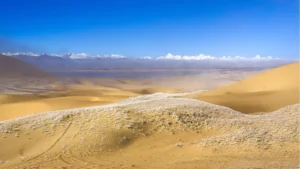
Carlos Alcaraz (Spain) has clinched the men’s singles Madrid Open title 2022 after beating the defending champion Alexander Zverev (Germany). Alcaraz has also defeated Rafael Nadal and Novak Djokovic (world No.1) to reach the final. It is his second Masters 1000 crown after Miami 2022 and his fourth title of the year.
Buy Prime Test Series for all Banking, SSC, Insurance & other exams
Ons Jabeur (Tunisia) has clinched the women’s singles title to become the first African player to win a WTA 1000 event.
Here are the winners of different categories:
| Category | Winner |
| Men’s singles: | Carlos Alcaraz (Spain) |
| Women’s singles: | Ons Jabeur (Tunisia) |
| Men’s doubles: | Wesley Koolhof (Netherlands) & Neal Skupski (United Kingdom) |
| Women’s doubles: | Gabriela Dabrowski (Canada) & Giuliana Olmos (Mexico) |




 Which is the Highest Desert in the World...
Which is the Highest Desert in the World...
 U-19 Asia Cup Schedule 2025: Full List o...
U-19 Asia Cup Schedule 2025: Full List o...
 U-19 Asia Cup 2025, Vaibhav Suryavanshi ...
U-19 Asia Cup 2025, Vaibhav Suryavanshi ...







